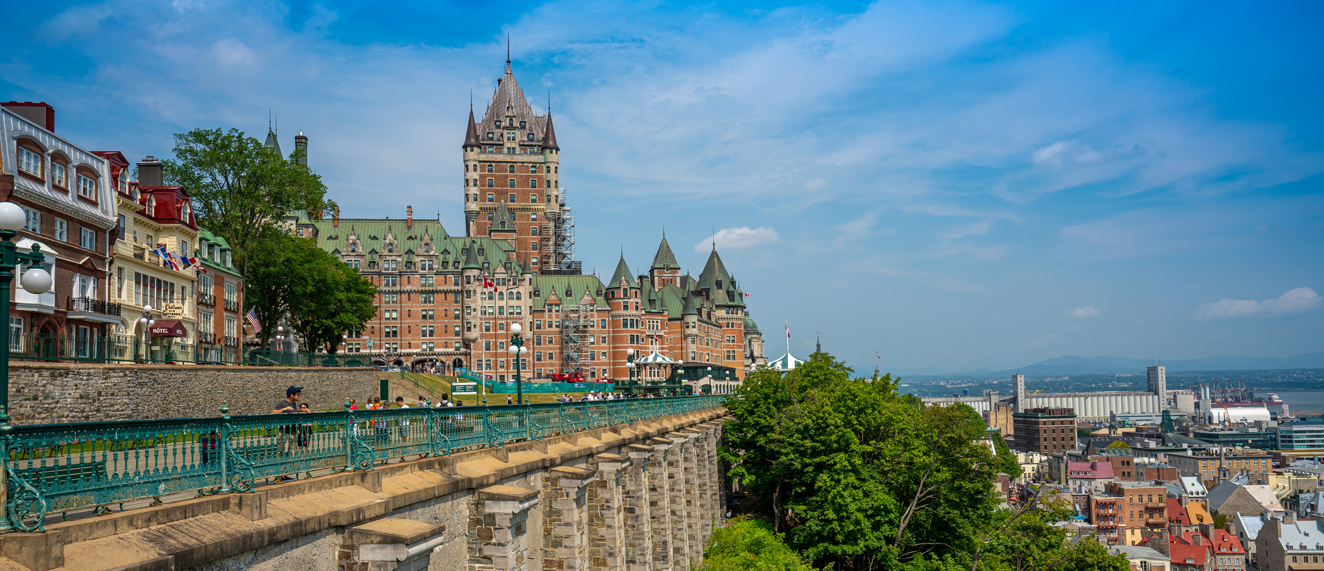Buyers want to know all the facts before they make one of the biggest decisions of their lives. As a REALTOR®, your clients rely on you to give them enhanced neighbourhood data, professional service and of course, the most up-to-date housing market data.
But if you’re looking for a little reprieve from the hustle and bustle, we recommend you take a few minutes to read about some of our favourite weird, wacky, and wonderful Canadian real estate (related) facts. Hey, you never know, these facts could make for great ice breakers with new clients!
1. Part of Canada is on Mars…sort of
While your clients won’t be able to house hunt on Mars just yet, a crater on the planet was named after the Town of Gander, Newfoundland & Labrador to honour its history in pioneering aviation and its efforts in space research.
Due to its strategic location and runway capacity, Gander International Airport was a designated alternate landing site for NASA’s Space Shuttle program. Gander’s airport can handle the world’s largest, fastest, and heaviest aircraft.
The Gander crater is 38 km in diameter and is located south of the planet’s equator region, known as Hellas Planitia.
Learn more about Gander on REALTOR.ca Living Room.
2. Old Quebec is the last walled city north of Mexico
Quebec’s Old Town is the only North American fortified city north of Mexico that still has its walls. These walls acted as the area’s defence system between 1608 and 1871. The Historic District of Old Quebec was declared a UNESCO World Heritage Site in 1985. You can find at least 11 different architectural styles in Upper and Lower Towns, which makes sense given the area has been around for more than 400 years—styles change!
If your clients are dreaming of cobblestone streets, towering cathedrals and all the bistros and boutiques you’d expect to see in a European city, Quebec City might just be the place for them.
Learn more about Quebec City on REALTOR.ca Living Room.
3. No one locks their doors in Churchill, Manitoba
For anyone who has been yelled at by a parent for not locking the door, this might seem startling, but keeping doors unlocked is encouraged in Churchill, Manitoba. That’s because polar bears roam freely in town. Keeping doors unlocked (particularly car doors) ensures residents can make a quick escape if they encounter an unruly bear walking down the street.
Churchill also has one of the world’s only polar bear jail—or more accurately a “polar bear holding facility” complete with air-conditioned holding cells.
Bonus: When most people think of snakes, they think of Australia, but actually, Manitoba has the world’s largest concentration of snakes. In the spring, approximately 70,000 snakes come out of hibernation in the Prairie province. The Narcisse Snake Dens are a bit of a tourist attraction, but personally, I’ll be doing my best to avoid the area.
4. Most people in Canada live within two hours of the United States
The Canada-U.S. border is the longest non-militarized border in the world, spanning 8,891 km. About 90% of Canadians live within 160 km of the U.S. border. And most of the population is condensed into major urban centres like Toronto, Montreal and Vancouver.
5. The Little House
Before tiny homes were a fad, Arthur Weeden built what was considered the first of its kind. Affectionately referred to as the Little House, Toronto’s smallest home sits on a lot meant to be just wide enough for a car to fit through—about 300 square feet. Weeden lived in the Little House with his family for 20 years.
6. The Half House
While we’re in Toronto, you can find another home that’s made national headlines. The Half House, located at 54 ½ St. Patrick Street was built in the 1890s in a row of six other identical residences. In the 1950s a developer snatched up the other row houses but 54 ½ refused. So, now you can find the building which looks like it’s been cut in half by a giant laser just a few blocks away from Nathan Phillips Square. Learn more on REALTOR.ca Living Room.
7. Hôtel de Glace
A must-see in the Quebec City region for two decades, the Hôtel de Glace—or ice hotel—has attracted more than a million visitors since opening its doors in 2000! Built out of snow and ice, this frosty work of art is rebuilt every winter and is the only ice hotel in North America! Learn more on REALTOR.ca Living Room.
8. Canada or Denmark?
You could say this is the most polite territorial conflict in history. Canada and Denmark have quietly disputed their claim to Hans Island, a remote piece of land in the Arctic, for decades. Both countries periodically visit the island to remove the other country’s flag and leave behind a bottle of Danish Schnapps or Canadian Whisky, respectively. Editor’s note: this conflict was resolved in the summer of 2022.
9. British Columbia is the rainiest place in Canada
Your clients will need to pack extra rain boots and umbrellas if they plan to buy in Abbotsford, British Columbia—it tops the list of rainiest major cities in the country with an average of 1,538 millimeters of precipitation annually. It also rains about 179 days per year.
Meanwhile, Vancouver Island’s Hucuktlis Lake (formerly Henderson Lake) receives more rainfall than any other place in North America with 7,296 millimeters of precipitation annually—that’s a lot of rain. The area set a record back in 1997 for the most annual precipitation in North America with 9,307 millimeters over 252 days. That’s about 30.5 feet—or about four moose.
Don’t let all that rain dampen your clients’ plans to relocate in British Columbia. There’s plenty to love on the West Coast, such as its mild climate, abundance of forest space and bustling Chinatown (Vancouver’s is the third largest Chinatown in North America).
Your turn
Have a fun fact you’d like to share? Leave it in the Comments below.





